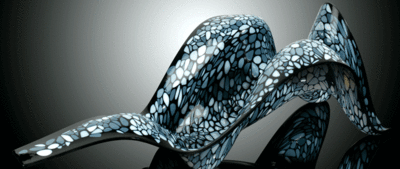We’ve discovered a lengthy interview with 3D artist and research Neri Oxman of the MIT Media Lab, whose astounding explorations into radical structures using 3D printing have been featured here previously. In the 2200 word interview, published in Material Connexion, Oxman explains much of her 3D printing and artistic philosophy.
We noted some highlights:
… the work touches upon issues in design process that are applicable not only to architectural and design practice, but also to emerging areas in material engineering and digital fabrication. When exploring an integrated design approach that seeks to overlap with, and operate across, multiple fields design becomes innovative, richer, and more capable of broad impact. Design, ultimately, is about an ability to work through constraints.
and
So-called sustainable design standards relate to architectural functional components that are somewhat old-fashioned in their construction methods: think bricks, or the hegemony of metal. In the future, composites are going to occupy a much broader portion of the building industry and concrete will be something of the past.
and
I hope the work opens a new scale between architecture and material science. Designers should not always accept off-the-shelf materials but realize that they have the power to design and manipulate material behavior.
and
In my work I seek to shift the discourse of design production from a form-centric approach to an environmental-centric approach where form is motivated, represented and defined by its structural and environmental performance
We strongly support these philosophies, as they will eventually lead to a true revolution in not only 3D printing, but construction in general. The idea that materials are malleable breaks millennia old concepts of making and opens up a new world of design possibilities.
If there ever was someone reaching to the utmost end of the envelope of 3D printed design, it must be Neri Oxman.


